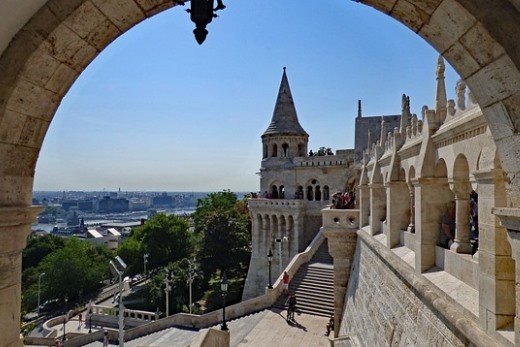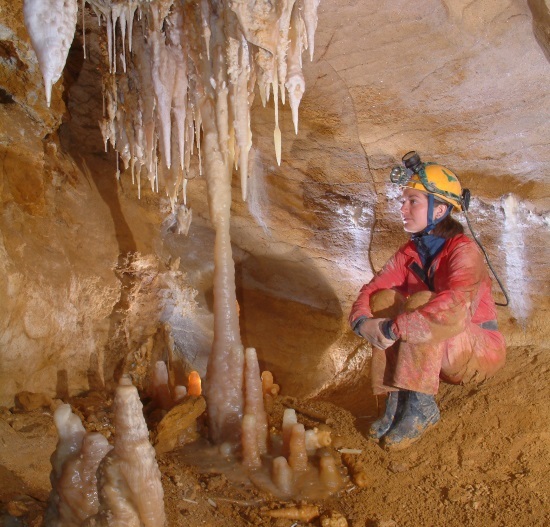Private taxi, minibus and coach transfers from Budapest Airport (BUD)
Easy Booking. Reliable Service. Great Prices.
Things to Do in Summer in Budapest
Cool caves, warm baths and hot nights wait for you in Summer in Budapest
2024-03-18 | TRAVEL GUIDE

Budapest is one of Europe’s favorite cities when it comes to exploring. It has more soul compared to Paris, Rome or London, an elegant architecture and sophisticated scene.
Budapest is far less expensive than many European cities and there’s a number of activities to do there, especially during the summer.
Hence, once you’re done with your homework on the top music & dance clubs in Budapest, here’s a list of things – some more unusual than others - to do in Budapest during the summer, which you can read in your airport shuttle.
A stroll across the Chain Bridge
The Chain Bridge is one of the most recognizable landmarks of Budapest. Completed in 1849, it was the first bridge to permanently connect Buda and Pest. At the time, the Chain Bridge was considered to be one of the wonders of the world and the architect was so proud of it that he challenged anyone to find fault with the bridge. It is said that when it was discovered that the lions that stand guard at either end are missing their tongues, the architect committed suicide. A summer evening stroll across the bridge promises some magnificent views and relaxing time.
A day in the Széchenyi Baths
Once in Budapest, you must plan a visit to the thermal baths – last places to witness the Turkish influence in Hungary. There are many baths in Budapest, so it is a good idea to visit one or few which are most popular. Such thermal baths are the grandiose Széchenyi, and the best experience is to be gained if you visit early in the morning or just before sunset. So don’t forget to pack you bathing suit.
Danube River Cruise at night
Budapest is wonderful by day, but it’s stunning by night. The buildings lining the banks of the Danube twinkle and reflect on the dark waters, while the many bridges mesmerize with their different lighting. One hour evening cruises are available at the docks, with audio headsets so you can hear about the history of Budapest, the buildings, and hear little known facts. Longer buffet-style dinner cruises are also available if you wish to spend the whole evening as well.
Caving Beneath Budapest
The rushing waters formed a massive cave system beneath Budapest, more than 100 kilometers long. Since exploring this system is best done during the summer, grab helmets and headlamps, and get ready to get dirty.
This activity is not for everyone though, since worming your way through tight crevices in wicked poses is needed, especially in the longest cave of Hungary, the Mátyás-hegyi cave in the Pál-völgyi cave system.
This cave tour lasts nearly 3 hours, instructed by a caving guide, so if you’re even a little claustrophobic, do not engage in this activity.

The Labyrinth of Buda Castle
The Labyrinth of Buda Castle is one of the 7 wonders of the underground world and adding to its’ mystery, was closed down in 2011 after police raided it and forced everyone to evacuate. Later, it re-opened only a mile for the public, out of the 6 mile long labyrinth. When the heat outside gets strong, a good idea is to check out this misty former prison where its most famous prisoner Vlad Tepes, or Count Dracula, was held in captivity by Hungarian King Matthias Corvinus during the 15th century.
Climb the Fisherman’s Bastion
Located on the Castle Hill, the neo-Gothic terrace of the Fisherman’s Bastion offers stunning panoramic views of the city and a tasty cup of coffee. Once there, make sure to explore the seven ornate turrets of the dreamy structure. These turrets symbolize the tents of the seven Magyar tribe leaders, who settled the Carpathian Basin in 896, leading to the existence of modern-day Hungary.
A Segway tour through Budapest
Budapest has Segway tours starting out with orientation in a quiet street to get the hang of operating it, especially if you don’t have any experience. You can then hit the streets throughout Budapest to see all the major attractions with your guide, where you can hear many information along the way. The guided tours last around 2.5 hours, and this is a cool way to get to know Budapest at first glance.
Enjoy traditional Hungarian food and wine outdoors
Budapest is full of local (and not touristy) restaurants serving Hungarian dishes at reasonable prices in an outdoor seating. If you want to experience the real Hungarian culinary taste, avoid all restaurants along the tourist paths and ask the locals where to eat. There are numerous bistros where you can enjoy homemade traditional Hungarian dishes, like Hungarian goulash soup, rabbit with dumplings, gravy and cream, all paired with the unique
Hungarian wine - Tocai.
Visit Budapest’s oldest confectionery
Budapest has many cafés where you can enjoy delicious coffee and traditional sweets. However, Cafe Ruszwurm on the Castle Hill, is one of Budapest’s oldest traditional confectioners still open as a cafe. The cafe, has about a dozen seats, so even if you need to wait for a table, you won’t be disappointed. Here you can choose from a wide selection of fresh pastries, truffles, and coffee blends. The interior is charming, with antique furniture and tools of the old confectionery trade in the glass cabinets.
A visit to the Central Market Hall
The Central Market Hall was built in the 19th century and it’s the largest indoor market in Budapest for typical Hungarian products. On the first floor you can find the food hall with vendors selling everything from fresh vegetables to Hungarian sausages and Hungarian paprika to Hungarian wines. Here you can buy fresh ingredients for an inexpensive lunch of traditional Hungarian foods. And on the second floor, you can buy wares, like souvenirs and traditional Hungarian embroidery.
Budapest is an amazing city any way you look at it. Some say that winter in Budapest is the best season to visit, while others rely on visits during the summer.